Address
AVSSO 2242 SE 171st AVE Portland Oregon USA 97233
Work Hours
Monday to Friday: 7AM - 7PM
Weekend: 10AM - 5PM
Address
AVSSO 2242 SE 171st AVE Portland Oregon USA 97233
Work Hours
Monday to Friday: 7AM - 7PM
Weekend: 10AM - 5PM
Explore the 22 Major Arcana cards and unlock the secrets of tarot with this beginner's guide.
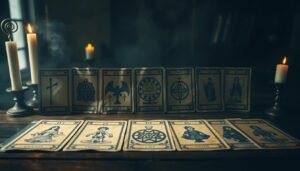
Embarking on a journey into tarot reading can be both fascinating and overwhelming, especially for beginners. The 22 Major Arcana cards form the core of a tarot deck, holding deep symbolic meanings and significance.
These cards are not just mere illustrations; they represent major life themes, archetypes, and transitions. Understanding the Major Arcana is crucial for anyone looking to grasp the fundamentals of tarot reading.
For those new to tarot, deciphering the 22 Major Arcana can seem daunting. However, with a little guidance, beginners can unlock the secrets these cards hold, gaining insights into their lives and futures.
Tarot reading, a tool for self-discovery and guidance, has a fascinating foundation. To truly understand tarot, one must delve into its history, structure, and the distinct roles of its various cards.
Tarot reading has its roots in the 15th century, originating as a card game in Italy. Over time, it evolved into a tool for divination and self-reflection. The tarot deck is used for gaining insight into one’s life, understanding personal circumstances, and exploring potential futures.
The purpose of tarot reading is multifaceted. It serves as a reflective tool, helping individuals understand their current situation and the factors influencing it. It also acts as a guiding light, offering perspectives on possible outcomes and the steps one might take to achieve desired results.
A standard tarot deck consists of 78 cards, divided into two main categories: the Major Arcana and the Minor Arcana. Understanding the structure of the tarot deck is crucial for effective tarot reading.
The Minor Arcana comprises 56 cards, reflecting various aspects of everyday life. In contrast, the Major Arcana consists of 22 cards, representing significant life themes, transitions, and archetypes. The Major Arcana cards are considered to hold deeper, more profound meanings.
Within the Minor Arcana, there are Court Cards (Kings, Queens, Knights, and Pages) and Numbered Cards (Ace through 10). Court Cards often symbolize individuals or personalities, while Numbered Cards represent situations, events, or stages in a process.
By understanding the fundamentals of tarot reading, including the history and structure of the tarot deck, one can begin to appreciate the depth and complexity of this ancient practice.
At the core of tarot reading lies the 22 Major Arcana cards, a sequence of powerful archetypes that guide us through life’s journey. These cards are not just part of the tarot deck; they are its soul, providing deep insights into our spiritual path and personal growth.
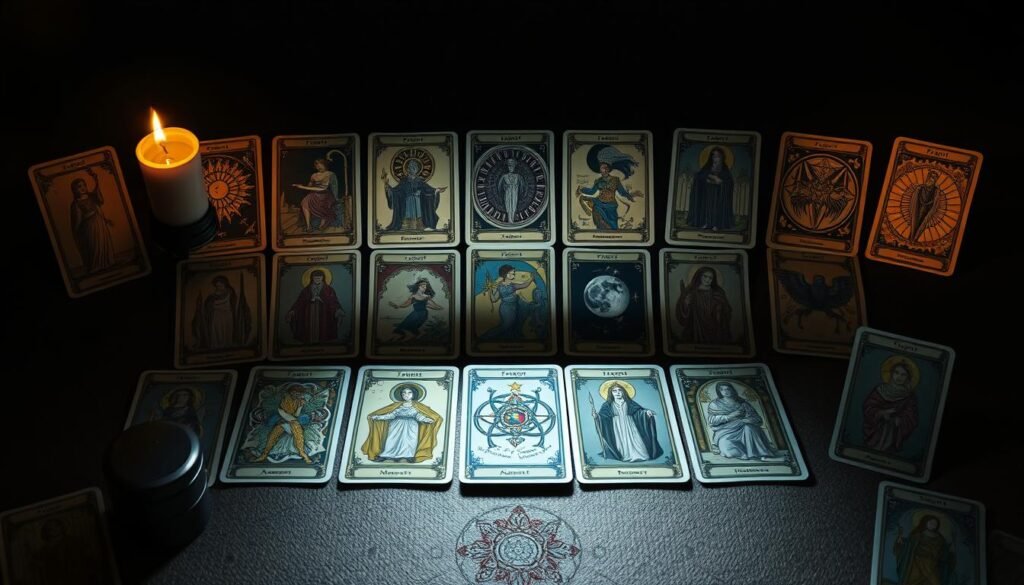
The Major Arcana cards are special because they represent major life themes, transitions, and archetypes. Unlike the Minor Arcana, which reflects daily life and its challenges, the Major Arcana delves into the deeper, spiritual aspects of our existence. Each card in this series symbolizes a significant stage or experience in the journey of life, from innocence and beginnings to maturity and fulfillment.
The narrative arc of the Major Arcana is known as the Fool’s Journey, a metaphorical path that symbolizes personal growth, self-discovery, and spiritual evolution. Starting with the Fool (0), the journey progresses through various stages, each represented by a card, culminating in the World (XXI). This journey is not just a sequence of events but a symbolic representation of the human experience, filled with challenges, lessons, and triumphs.
The Major Arcana cards embody various archetypes, universal symbols and images that recur across cultures and time. These archetypes, such as the Mother, the Trickster, and the Hero, resonate deeply with our collective unconscious, providing a framework for understanding ourselves and our place in the world.
The sequence of the Major Arcana cards also represents a journey of spiritual evolution. From the initial step into the unknown (The Fool) to the final integration and fulfillment (The World), the cards trace a path of growth, self-awareness, and enlightenment. This journey is not linear but rather a spiral path that reflects the complexities and depths of human spiritual development.
Embarking on the journey of Major Arcana readings requires a blend of understanding, intuition, and the right tools. As you begin, it’s essential to familiarize yourself with the foundational elements that will enhance your tarot reading experience.
To start with Major Arcana readings, you’ll need a few essential tools. First and foremost is a tarot deck. While there are many decks available, a standard Rider-Waite deck is recommended for beginners due to its widely recognized symbolism. Additionally, a tarot guidebook can be helpful, though not necessary, as it provides interpretations for the cards.
Creating a conducive environment is crucial for effective tarot readings. Find a quiet, comfortable space where you can focus without distractions. Some readers prefer to light candles or burn incense to create a calming atmosphere. The key is to make the space your own and feel relaxed within it.
Connecting with your tarot deck is a personal and intimate process. It involves understanding the deck’s energy and attuning yourself to its symbolism. This connection can be fostered through regular handling of the cards and meditation.
Before using your new tarot deck, it’s advisable to cleanse and charge the cards. This can be done by placing the deck in moonlight or by using a smudging technique with sage. Cleansing removes any negative energy, while charging revitalizes the deck.
A great way to start your tarot journey is with daily card pulls. This involves drawing a card each day and reflecting on its meaning and relevance to your current situation. It’s a simple yet effective way to become more familiar with the Major Arcana cards and their interpretations.
To further enhance your understanding, consider the following practices:
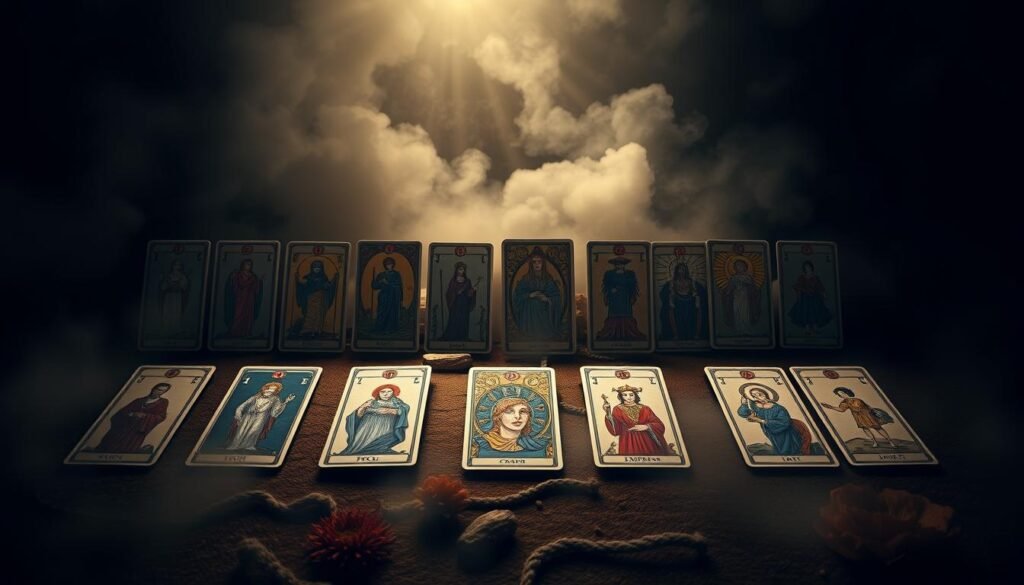
The journey through the Major Arcana begins with understanding the first seven cards, each holding a unique significance in tarot readings. These cards lay the groundwork for interpreting the deeper meanings and symbolism within the tarot deck.
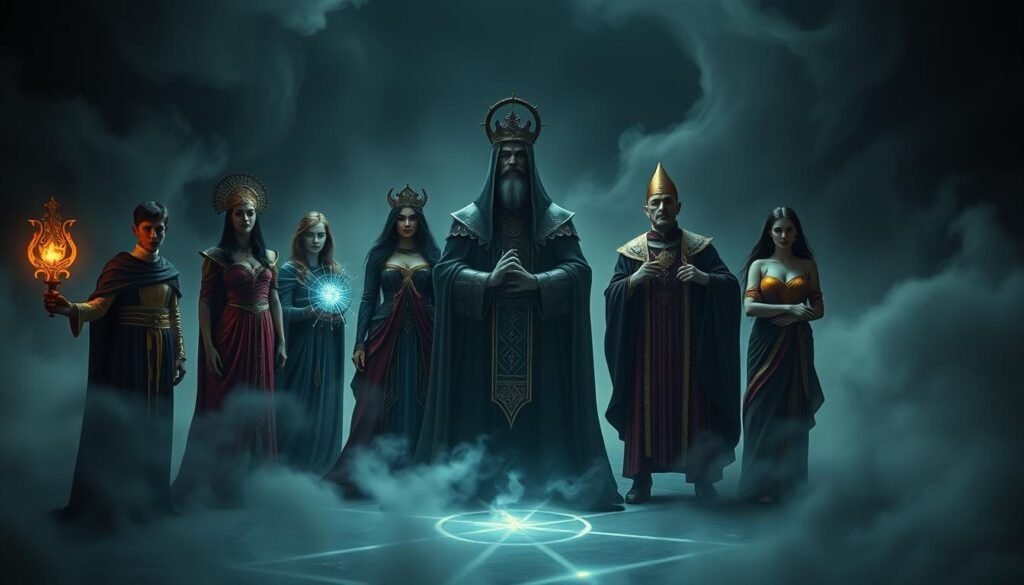
The Fool represents new beginnings, innocence, and the willingness to take risks. This card signifies the start of a journey, where one must trust in the universe and have faith that everything will work out.
The Magician is a symbol of manifestation, personal power, and skill. This card indicates the ability to tap into one’s inner resources to achieve goals and manifest desires.
The High Priestess embodies intuition, wisdom, and secrecy. She suggests that one should look beyond the obvious, trusting intuition and inner wisdom to guide decision-making.
The Empress represents abundance, nurturing, and fertility. This card is associated with the natural world and signifies a period of growth, stability, and prosperity.
The Emperor symbolizes authority, structure, and leadership. He indicates a need for discipline, organization, and a strong sense of responsibility.
The Hierophant represents tradition, conformity, and spiritual guidance. This card suggests following established norms and seeking wisdom from traditional sources.
The Lovers card is about choices, relationships, and love. It signifies a critical decision that needs to be made, often related to matters of the heart or significant life choices.
| Card | Meaning | Symbolism |
|---|---|---|
| The Fool | New Beginnings | Innocence, Risk-taking |
| The Magician | Manifestation | Personal Power, Skill |
| The High Priestess | Intuition | Wisdom, Secrecy |
| The Empress | Abundance | Nurturing, Fertility |
| The Emperor | Authority | Structure, Leadership |
| The Hierophant | Tradition | Conformity, Spiritual Guidance |
| The Lovers | Choices | Relationships, Love |
Exploring the middle segment of the 22 Major Arcana cards provides a richer understanding of tarot readings and their applications. This section delves into the symbolism and interpretation of the middle eight cards, from The Chariot to Temperance.
The Chariot represents willpower, control, and determination. It signifies overcoming obstacles through focus and perseverance. Determination is key when this card appears, indicating a need to stay the course despite challenges.
Strength is about inner courage, self-discipline, and gentle yet firm action. It suggests that true strength lies not in brute force but in compassion and patience.
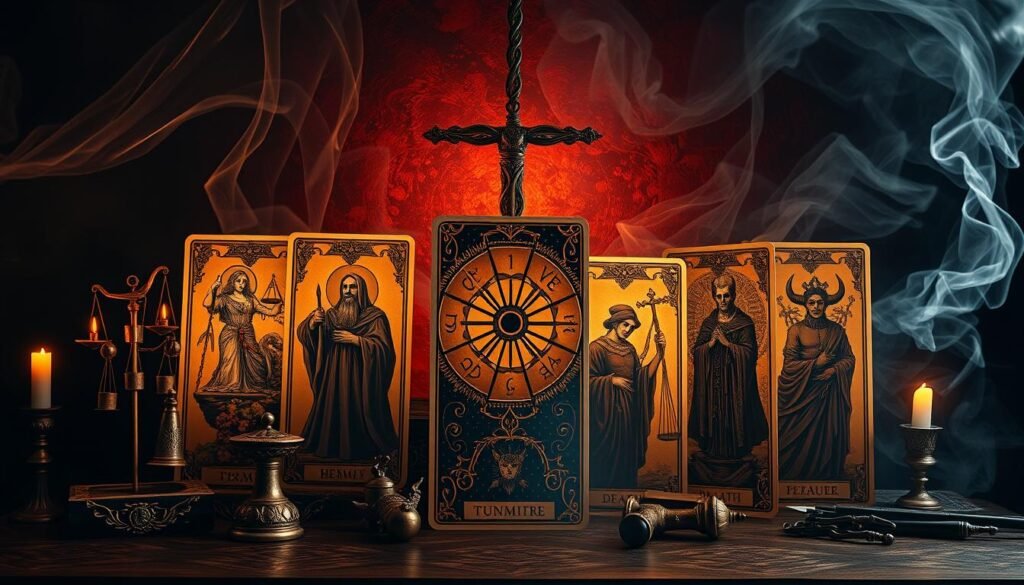
The Hermit card signifies a period of introspection and solitude. It advises seeking wisdom through quiet contemplation and introspection.
The Wheel of Fortune represents the cyclical nature of life, destiny, and change. It indicates that life is subject to cycles of fate, and one must be prepared to adapt.
Justice is about balance, fairness, and karma. It calls for fairness and accountability, suggesting that actions have consequences.
The Hanged Man signifies the need to let go and surrender to the current circumstances, gaining a new perspective on life and its challenges.
Death represents transformation, change, and renewal. It indicates the end of an old cycle and the beginning of a new one, necessitating transformation.
Temperance is about balance, harmony, and moderation. It advises finding balance in life and healing through patience and moderation.
| Card | Meaning | Key Themes |
|---|---|---|
| The Chariot | Determination, Control | Willpower, Overcoming Obstacles |
| Strength | Courage, Self-Discipline | Inner Strength, Compassion |
| The Hermit | Introspection, Solitude | Wisdom, Contemplation |
| Wheel of Fortune | Cycles, Destiny | Change, Fate |
| Justice | Fairness, Balance | Karma, Accountability |
| The Hanged Man | Surrender, Perspective | Letting Go, New Views |
| Death | Transformation, Renewal | Change, New Beginnings |
| Temperance | Balance, Harmony | Moderation, Healing |
As we progress through the Major Arcana, the final seven cards offer profound insights into the human experience. These cards represent the culmination of the journey begun by The Fool, encompassing themes of challenge, transformation, and ultimately, fulfillment.
The Devil card signifies bondage, materialism, and the shadow self. It represents the aspects of our lives where we feel trapped or limited, often by our own desires or addictions. Breaking free from these bonds is a crucial step towards personal growth and liberation.
The Tower is a card of sudden change, upheaval, and revelation. It indicates a moment of truth that shatters illusions, forcing us to confront reality. This card can signal a significant transformation, although it may come with initial shock or discomfort.
Following the turmoil of The Tower, The Star brings a message of hope, renewal, and positive energy. It symbolizes faith in the universe and the understanding that we are not alone. This card encourages us to have faith and trust in the natural flow of life.
The Moon represents the realm of illusion, intuition, and the subconscious. It suggests that not everything is as it appears, and we must look beyond the surface to understand the truth. This card can indicate confusion or deception, but also the potential for profound insight if we navigate its mysteries.
The Sun is a card of joy, fulfillment, and enlightenment. It signifies a state of happiness and contentment, where our true selves are revealed. This card is a celebration of life’s simple pleasures and the joy found in connecting with others.
Judgment represents awakening, self-awareness, and personal growth. It is a call to rise to a higher level of consciousness, letting go of past regrets or fears. This card signifies a moment of rebirth, where we are called to embrace our true purpose.
The World is the final card of the Major Arcana, representing completion, fulfillment, and integration. It signifies the achievement of our goals and the realization of our dreams. This card is a celebration of our journey and the wisdom gained along the way.
| Card | Meaning |
|---|---|
| The Devil | Bondage, Materialism |
| The Tower | Upheaval, Revelation |
| The Star | Hope, Renewal |
| The Moon | Illusion, Intuition |
| The Sun | Joy, Fulfillment |
| Judgment | Awakening, Self-Awareness |
| The World | Completion, Fulfillment |
In conclusion, the final seven Major Arcana cards offer a rich tapestry of symbolism and meaning, guiding us through the complexities of the human experience. By understanding these cards, we can gain deeper insights into our lives and the world around us.
Unlock the full potential of your Major Arcana readings with these practical tarot spreads. The Major Arcana cards hold deep insights into your journey, and using the right spreads can help you understand their messages more clearly.
The Three-Card Spread is a simple yet powerful tool for gaining insights into your past, present, and future. By drawing three cards and placing them in a row, you can understand how past events have led to your current situation and what the future may hold.
How to use it: Shuffle your deck, draw three cards, and lay them out from left to right. The first card represents the past, the second the present, and the third the future.
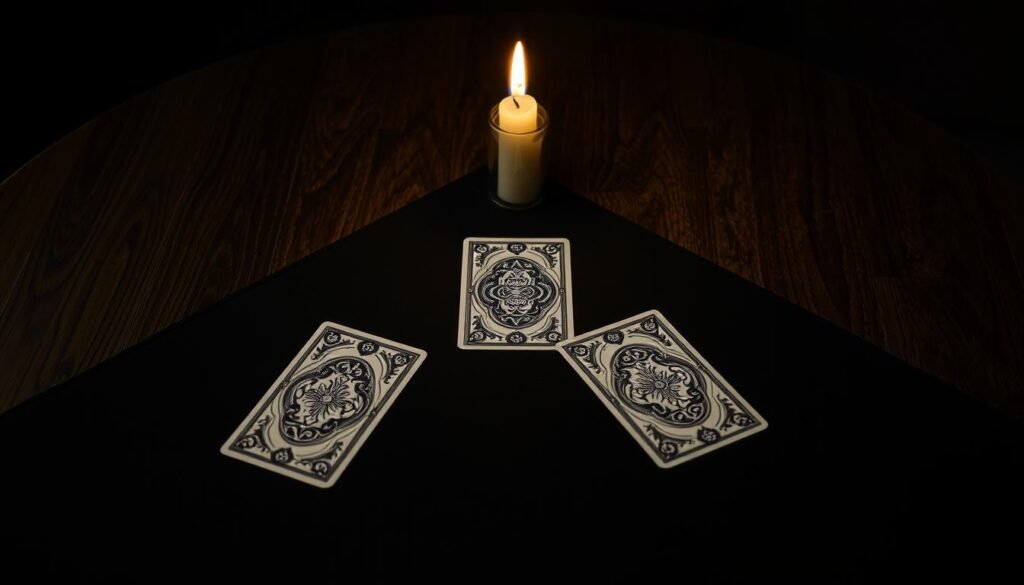
The Celtic Cross spread is a more complex and detailed spread that provides a comprehensive view of the querent’s situation. It covers various aspects such as challenges, past influences, and future outcomes.
Benefits: This spread offers a nuanced understanding of the interplay between different factors affecting your life.
For a deeper connection with the Major Arcana, consider using a spread that consists only of these cards. This can help you tap into their profound symbolism and themes.
To perform a Major Arcana-Only Spread, separate the Major Arcana cards from the rest of the deck. Shuffle them and draw a number of cards corresponding to the spread you’re using. For example, a three-card spread can be very insightful.
When interpreting the results, consider the symbolism, themes, and narratives presented by the Major Arcana cards. Look for patterns, such as repeated themes or numbers, and consider how these cards interact with each other.
“The Tarot is a mirror to the soul, and the Major Arcana cards are its most revealing reflections.” –
The Major Arcana cards hold significant symbolism and meaning, but interpreting them correctly requires avoiding certain common errors. Understanding these pitfalls can enhance the accuracy and depth of tarot readings.
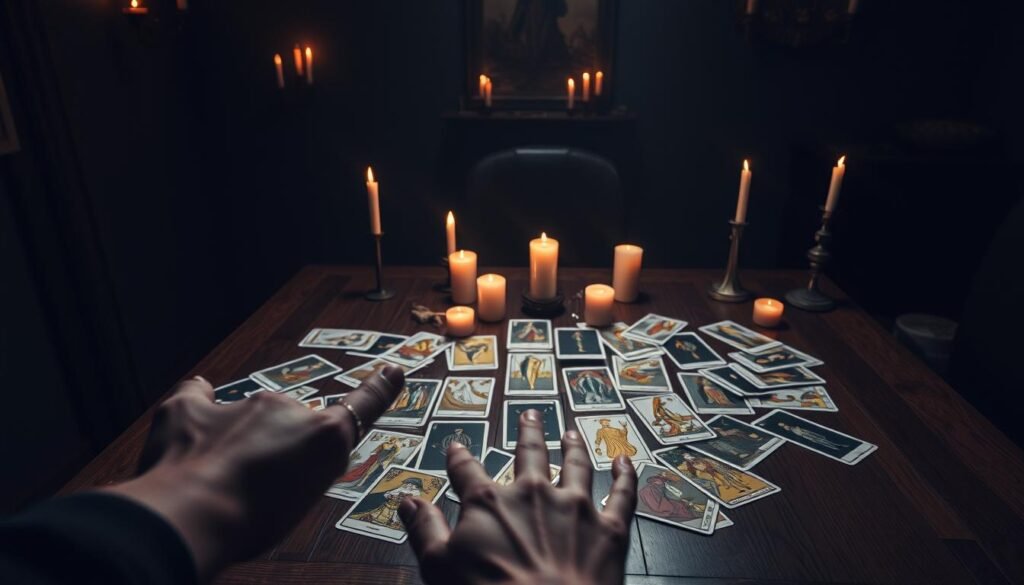
One of the most common mistakes is misinterpreting the meaning of Major Arcana cards. Each card has a rich symbolism that can be influenced by its position in the spread, the question being asked, and the reader’s intuition. For instance, The Tower card, often associated with upheaval, can also signify sudden change or revelation, depending on the context. To avoid misinterpretation, it’s crucial to study the card’s symbolism and consider the context of the reading.
Ignoring one’s intuition and the context of the reading is another significant mistake. Tarot reading is not just about memorizing card meanings; it’s also about trusting one’s intuition and understanding the narrative that unfolds during a reading. The Major Arcana cards tell a story, and each card influences the next. Ignoring this narrative can lead to a disjointed and inaccurate interpretation.
Relying too heavily on guidebooks is a pitfall many tarot readers encounter. While guidebooks are valuable resources, they should not replace personal understanding and intuition. The Major Arcana cards are complex and multifaceted, and their meanings can vary significantly from one reading to another. Developing a personal connection with the cards and trusting one’s interpretation is essential for a meaningful tarot reading experience.
As you conclude this introduction to the 22 Major Arcana cards, it’s clear that your tarot journey is just beginning. The cards offer a profound tool for self-reflection, guidance, and personal growth. By understanding the symbolism and narrative of the Major Arcana, you’re equipped to tap into their wisdom and apply their insights to your life.
To continue your journey, practice regularly with the 22 Major Arcana, exploring different spreads and techniques. The three-card spread and Celtic Cross, discussed earlier, are excellent starting points. As you become more confident, consider incorporating the Major Arcana-Only spread to focus on the cards’ deeper symbolism.
Embracing the 22 Major Arcana as a guide, you’ll find that your understanding of tarot deepens, and your connection to the cards strengthens. This journey is a path of self-discovery and empowerment, allowing you to navigate life’s challenges with greater clarity and purpose. Continue to explore, learn, and grow with the Major Arcana, and you’ll find that your tarot practice becomes a rich and rewarding experience.